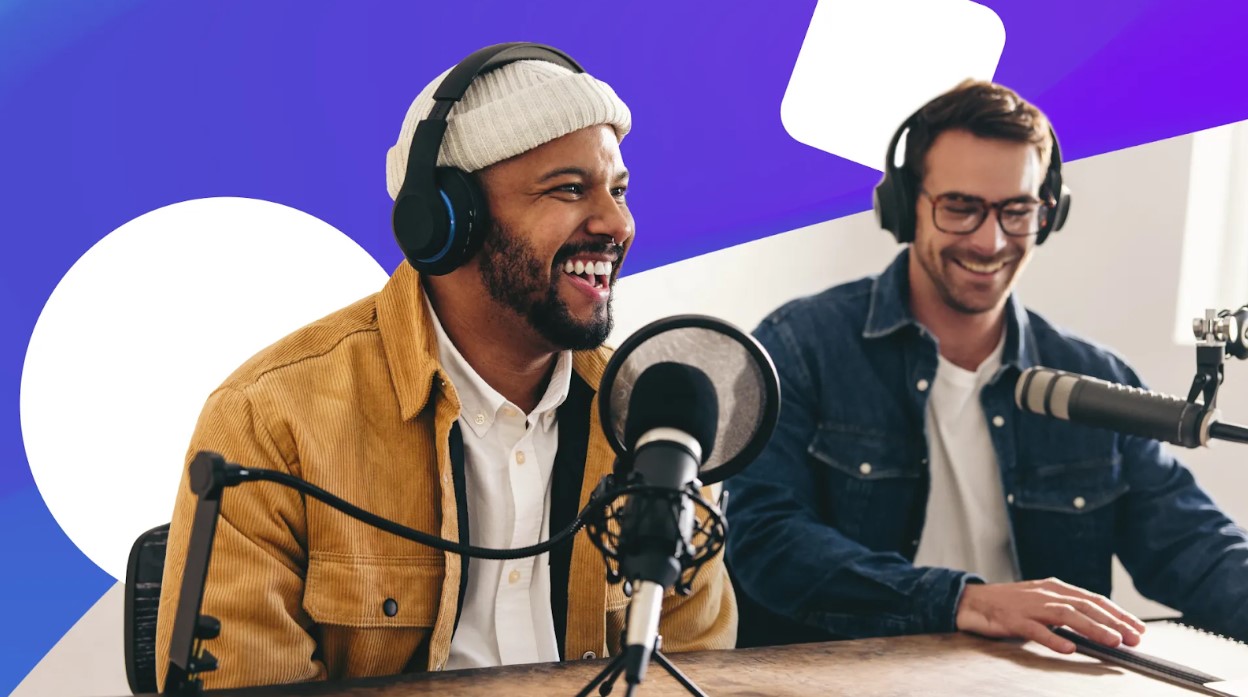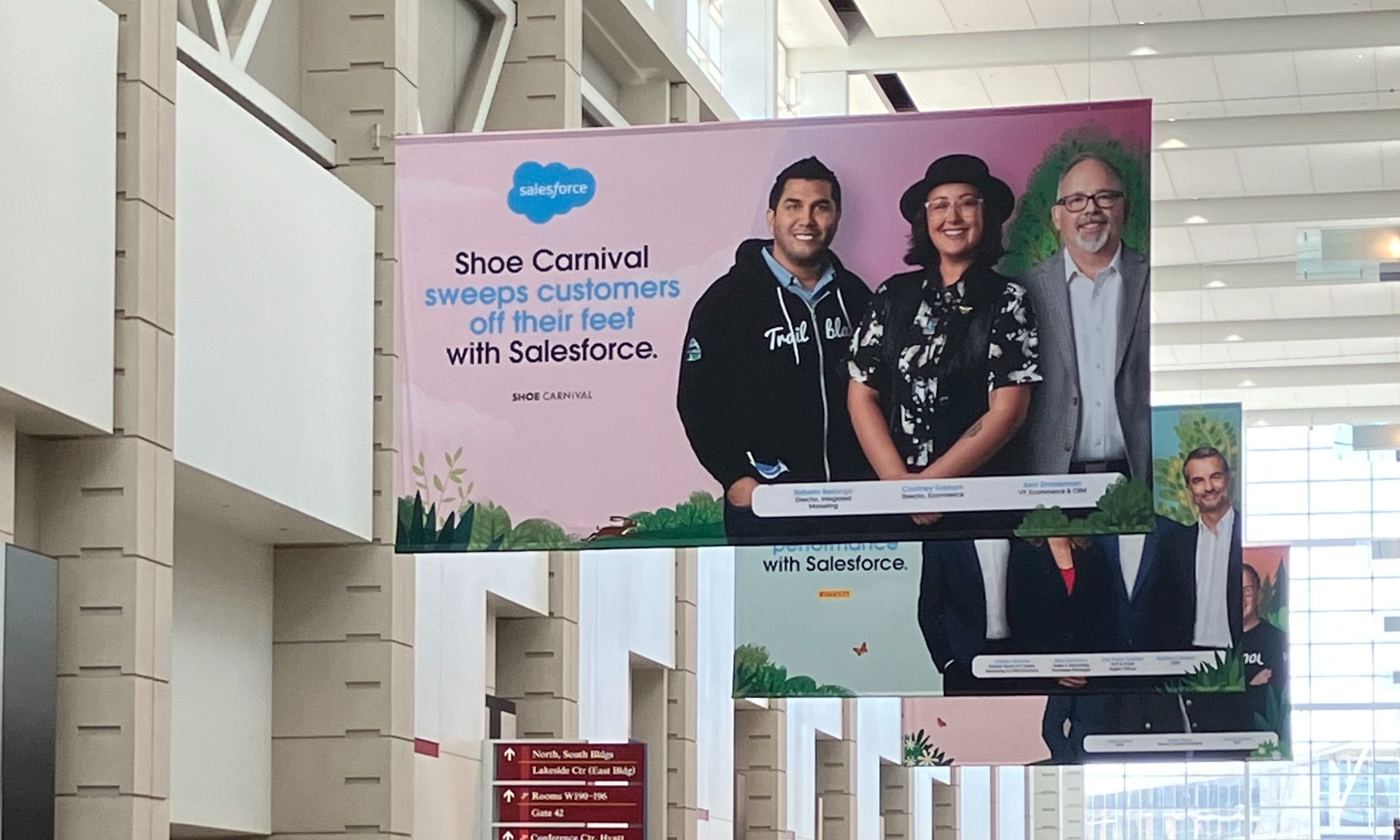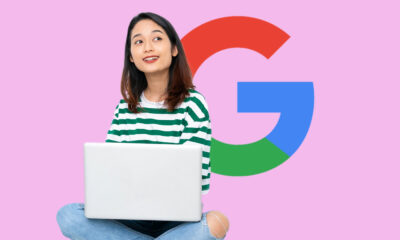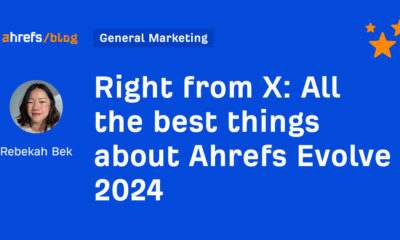MARKETING
Responsible Podcast Advertising Strategies for Brands

Historically, the power of podcast advertising has been a secret that performance marketers–myself included–wouldn’t mind keeping. I want to do my part in preserving what makes podcasting special, but based on the explosion of attendance at industry events and the number of household name brands I hear in my own favorite shows, the secret is out.
Therefore, it’s critical that we turn our attention to informing the ways that advertisers can and should play in this space, and the nuances to doing so successfully, so as not to water down the elements that make this channel so remarkable to begin with.
Podcast Advertising’s Performance Marketing Roots
I first ventured into podcast advertising back in 2014, coinciding with the debut of Serial’s first season. During that period, the podcasting landscape was predominantly occupied by performance advertisers, and for good reason. Podcasting was, and continues to be, an excellent gateway into the realm of paid marketing. With its streamlined ad production, modest investment requirements, and impressive audience response rates to calls-to-action, it quickly proved to be a standout channel in many marketers’ media mix.
These factors, among others, have consistently made podcasting a highly effective choice for performance advertisers. It’s no exaggeration to say that these brands played a foundational role in shaping the podcasting landscape.
Podcast Advertising Reaches New Audiences
A significant development isn’t just that podcast advertising can now move the needle on reach and brand awareness (which it certainly can); it’s also that there’s a sizable audience here that cannot be reached through traditional offline marketing.
In the 18-34 age group, podcasting reaches 18% of those who don’t listen to radio and 19% of those who don’t watch traditional broadcast TV. According to a recent study, avid podcast listeners are more inclined to subscribe to ad-free audio and TV services.
That incremental reach (as full-funnel marketers know very well) is absolutely critical to growth marketing. Lower funnel media focused on conversions, whether that’s podcasting or any other channel, can only scale when you are replenishing your funnel with new customers for those efforts to convert. Depending on the stage and scale of a brand, bringing in visitors can substantially boost lower funnel performance. Podcasting is a one-two punch in its ability to both reach additional audiences and move them through the funnel.
3 Podcast Advertising Factors To Consider
The ability to target harder to reach audiences should be top of mind for advertisers regardless of whether their goals are awareness, customer acquisition, or somewhere in between. But podcast advertising is a truly unique endeavor that needs to be strategized and executed with its distinctive elements in mind. Not only will this help preserve what our industry has come to know and love about the space, but the impact of the advertising itself hinges on brands knowing how to construct their campaigns around what will (and won’t) work here. Factors to consider include:
1. Host Reads
The power of the most traditional podcast format, the Host Read, has been studied and reported on at length. These advertisements, often featuring genuine personal experiences and more natural delivery, bear a striking resemblance to influencer marketing, and there’s a good reason for that. Many influencers either host podcasts themselves or have built their influencer following through podcasts. Therefore, authenticity plays a crucial role in these partnerships.
Additionally, collaborating with multiple shows allows for the utilization of distinct perspectives and storytelling. This approach helps create a campaign grounded in expert recommendations from various sources, effectively engaging diverse audiences and allowing hosts to choose an approach that they know will resonate with their own listeners. In the same way, with millions of podcasts in existence, advertisers can choose to work with hosts across a variety of sizes including macro, micro and everything in between.
2. Audience Targeting and the Role of Creative
Apart from benefiting from a host’s personal influence, there’s a growing variety of options using run-of-network inventory and audience targeting, much like in streaming audio and video. Ads are pre-recorded and inserted into a podcast episode during a break, ultimately served to a listener because they fit the audience criteria for the campaign either based on their characteristics or the type of content they’re listening to. Advertisers can even use their own first party data to reach people who resemble current high-value customers, those who used to be customers, or even seek out those that haven’t engaged with their brand before.
At times a podcast host might voice these ads, but most commonly, brands utilize professional voiceovers from the podcast partner or furnish their own creative. In either case, it’s essential to consider the context in which it will be consumed. Podcasts are an extremely leaned-in experience where it doesn’t take much to capture or maintain a listener’s attention. Running an ad with energy or sound effects that don’t fit the environment can be jarring and do a disservice to how the advertiser is perceived.
Some podcast partners have specific rules about using music in ads, while others want to create the ad themselves to ensure it sounds natural across their shows. This helps maintain a stronger connection between the ad and the network of content in which it may land. With these types of buys as well as with host reads, rotating in fresh, highly relevant creative is key in maintaining engagement and the user experience, especially given the light commercial load and the heightened attention that will be paid to your ad.
3. Cost and Efficiency
If you imagine a spectrum of podcast advertising options, with highly customized host-reads and bespoke podcasts on one end and programmatic audience-based buying on the other, there’s a vast and exciting array of choices in between. However, one consistent thread is pricing. Compared to the channels where most of our clients have achieved scale–like OTT, linear TV, streaming audio, and display ads–podcasting is categorically more expensive on a CPM (cost per thousand impressions) basis.
Several factors contribute to this high-end pricing, including the personal connection with podcast hosts, the lower ad clutter, and the longer length and customization of the creative. Despite the higher CPMs, we consistently observe that these premium rates are easily offset by a substantial increase in response and conversion rates. The best performing shows can at times have the highest CPMs; cost does play a role here, but creative execution and audience composition often outweigh efficiency. A recent study also revealed that audio advertising, especially in podcasts, excels at capturing audience attention. Podcasts outperform other digital, social, and TV benchmarks in terms of attentive seconds per thousand impressions. In today’s fragmented media landscape, where screens and devices abound, and time is at a premium, these findings underscore the value of investing in this channel.
In Summary
The specific approach to harnessing podcasting’s potential will naturally vary depending on campaign objectives, but adhering to best practices that have shaped this space is essential. It’s worth noting that improvements in how our media partners monetize and manage their ad inventory are also pivotal in this equation, a topic frequently discussed in our industry. But this space has always been focused on continual self-improvement and the strides that have been made are truly remarkable.
Embracing the evolving ad tech is an exciting venture for performance marketers, offering new and sophisticated ways to engage with consumers. Furthermore, due to the incremental reach and the ability to find new audiences for those brands who have already reached prospective customers en masse, podcasting will very likely provide a gateway to additional growth.
With the extraordinary progress and diversification of this channel, building a multifaceted advertising portfolio within podcasting is not only feasible but highly effective. Podcasting has proven its role as a full-funnel marketing channel, and by combining personalized endorsements, tailored creative content, and emerging targeting and technology, podcast campaigns should be an integral component of virtually any brand’s media strategy.
Want to learn more about Podcast Advertising? Tune into Cafarelli’s interview on Podcast Advertising Playbook, dropping October 25th on www.podcastadvertisingplaybook.com and wherever you listen to your podcasts.
MARKETING
YouTube Ad Specs, Sizes, and Examples [2024 Update]
![YouTube Ad Specs, Sizes, and Examples [2024 Update] YouTube Ad Specs, Sizes, and Examples](https://articles.entireweb.com/wp-content/uploads/2024/06/YouTube-Ad-Specs-Sizes-and-Examples.jpg)
Introduction
With billions of users each month, YouTube is the world’s second largest search engine and top website for video content. This makes it a great place for advertising. To succeed, advertisers need to follow the correct YouTube ad specifications. These rules help your ad reach more viewers, increasing the chance of gaining new customers and boosting brand awareness.
Types of YouTube Ads
Video Ads
- Description: These play before, during, or after a YouTube video on computers or mobile devices.
- Types:
- In-stream ads: Can be skippable or non-skippable.
- Bumper ads: Non-skippable, short ads that play before, during, or after a video.
Display Ads
- Description: These appear in different spots on YouTube and usually use text or static images.
- Note: YouTube does not support display image ads directly on its app, but these can be targeted to YouTube.com through Google Display Network (GDN).
Companion Banners
- Description: Appears to the right of the YouTube player on desktop.
- Requirement: Must be purchased alongside In-stream ads, Bumper ads, or In-feed ads.
In-feed Ads
- Description: Resemble videos with images, headlines, and text. They link to a public or unlisted YouTube video.
Outstream Ads
- Description: Mobile-only video ads that play outside of YouTube, on websites and apps within the Google video partner network.
Masthead Ads
- Description: Premium, high-visibility banner ads displayed at the top of the YouTube homepage for both desktop and mobile users.
YouTube Ad Specs by Type
Skippable In-stream Video Ads
- Placement: Before, during, or after a YouTube video.
- Resolution:
- Horizontal: 1920 x 1080px
- Vertical: 1080 x 1920px
- Square: 1080 x 1080px
- Aspect Ratio:
- Horizontal: 16:9
- Vertical: 9:16
- Square: 1:1
- Length:
- Awareness: 15-20 seconds
- Consideration: 2-3 minutes
- Action: 15-20 seconds
Non-skippable In-stream Video Ads
- Description: Must be watched completely before the main video.
- Length: 15 seconds (or 20 seconds in certain markets).
- Resolution:
- Horizontal: 1920 x 1080px
- Vertical: 1080 x 1920px
- Square: 1080 x 1080px
- Aspect Ratio:
- Horizontal: 16:9
- Vertical: 9:16
- Square: 1:1
Bumper Ads
- Length: Maximum 6 seconds.
- File Format: MP4, Quicktime, AVI, ASF, Windows Media, or MPEG.
- Resolution:
- Horizontal: 640 x 360px
- Vertical: 480 x 360px
In-feed Ads
- Description: Show alongside YouTube content, like search results or the Home feed.
- Resolution:
- Horizontal: 1920 x 1080px
- Vertical: 1080 x 1920px
- Square: 1080 x 1080px
- Aspect Ratio:
- Horizontal: 16:9
- Square: 1:1
- Length:
- Awareness: 15-20 seconds
- Consideration: 2-3 minutes
- Headline/Description:
- Headline: Up to 2 lines, 40 characters per line
- Description: Up to 2 lines, 35 characters per line
Display Ads
- Description: Static images or animated media that appear on YouTube next to video suggestions, in search results, or on the homepage.
- Image Size: 300×60 pixels.
- File Type: GIF, JPG, PNG.
- File Size: Max 150KB.
- Max Animation Length: 30 seconds.
Outstream Ads
- Description: Mobile-only video ads that appear on websites and apps within the Google video partner network, not on YouTube itself.
- Logo Specs:
- Square: 1:1 (200 x 200px).
- File Type: JPG, GIF, PNG.
- Max Size: 200KB.
Masthead Ads
- Description: High-visibility ads at the top of the YouTube homepage.
- Resolution: 1920 x 1080 or higher.
- File Type: JPG or PNG (without transparency).
Conclusion
YouTube offers a variety of ad formats to reach audiences effectively in 2024. Whether you want to build brand awareness, drive conversions, or target specific demographics, YouTube provides a dynamic platform for your advertising needs. Always follow Google’s advertising policies and the technical ad specs to ensure your ads perform their best. Ready to start using YouTube ads? Contact us today to get started!
MARKETING
Why We Are Always ‘Clicking to Buy’, According to Psychologists

Amazon pillows.
MARKETING
A deeper dive into data, personalization and Copilots

Salesforce launched a collection of new, generative AI-related products at Connections in Chicago this week. They included new Einstein Copilots for marketers and merchants and Einstein Personalization.
To better understand, not only the potential impact of the new products, but the evolving Salesforce architecture, we sat down with Bobby Jania, CMO, Marketing Cloud.
Dig deeper: Salesforce piles on the Einstein Copilots
Salesforce’s evolving architecture
It’s hard to deny that Salesforce likes coming up with new names for platforms and products (what happened to Customer 360?) and this can sometimes make the observer wonder if something is brand new, or old but with a brand new name. In particular, what exactly is Einstein 1 and how is it related to Salesforce Data Cloud?
“Data Cloud is built on the Einstein 1 platform,” Jania explained. “The Einstein 1 platform is our entire Salesforce platform and that includes products like Sales Cloud, Service Cloud — that it includes the original idea of Salesforce not just being in the cloud, but being multi-tenancy.”
Data Cloud — not an acquisition, of course — was built natively on that platform. It was the first product built on Hyperforce, Salesforce’s new cloud infrastructure architecture. “Since Data Cloud was on what we now call the Einstein 1 platform from Day One, it has always natively connected to, and been able to read anything in Sales Cloud, Service Cloud [and so on]. On top of that, we can now bring in, not only structured but unstructured data.”
That’s a significant progression from the position, several years ago, when Salesforce had stitched together a platform around various acquisitions (ExactTarget, for example) that didn’t necessarily talk to each other.
“At times, what we would do is have a kind of behind-the-scenes flow where data from one product could be moved into another product,” said Jania, “but in many of those cases the data would then be in both, whereas now the data is in Data Cloud. Tableau will run natively off Data Cloud; Commerce Cloud, Service Cloud, Marketing Cloud — they’re all going to the same operational customer profile.” They’re not copying the data from Data Cloud, Jania confirmed.
Another thing to know is tit’s possible for Salesforce customers to import their own datasets into Data Cloud. “We wanted to create a federated data model,” said Jania. “If you’re using Snowflake, for example, we more or less virtually sit on your data lake. The value we add is that we will look at all your data and help you form these operational customer profiles.”
Let’s learn more about Einstein Copilot
“Copilot means that I have an assistant with me in the tool where I need to be working that contextually knows what I am trying to do and helps me at every step of the process,” Jania said.
For marketers, this might begin with a campaign brief developed with Copilot’s assistance, the identification of an audience based on the brief, and then the development of email or other content. “What’s really cool is the idea of Einstein Studio where our customers will create actions [for Copilot] that we hadn’t even thought about.”
Here’s a key insight (back to nomenclature). We reported on Copilot for markets, Copilot for merchants, Copilot for shoppers. It turns out, however, that there is just one Copilot, Einstein Copilot, and these are use cases. “There’s just one Copilot, we just add these for a little clarity; we’re going to talk about marketing use cases, about shoppers’ use cases. These are actions for the marketing use cases we built out of the box; you can build your own.”
It’s surely going to take a little time for marketers to learn to work easily with Copilot. “There’s always time for adoption,” Jania agreed. “What is directly connected with this is, this is my ninth Connections and this one has the most hands-on training that I’ve seen since 2014 — and a lot of that is getting people using Data Cloud, using these tools rather than just being given a demo.”
What’s new about Einstein Personalization
Salesforce Einstein has been around since 2016 and many of the use cases seem to have involved personalization in various forms. What’s new?
“Einstein Personalization is a real-time decision engine and it’s going to choose next-best-action, next-best-offer. What is new is that it’s a service now that runs natively on top of Data Cloud.” A lot of real-time decision engines need their own set of data that might actually be a subset of data. “Einstein Personalization is going to look holistically at a customer and recommend a next-best-action that could be natively surfaced in Service Cloud, Sales Cloud or Marketing Cloud.”
Finally, trust
One feature of the presentations at Connections was the reassurance that, although public LLMs like ChatGPT could be selected for application to customer data, none of that data would be retained by the LLMs. Is this just a matter of written agreements? No, not just that, said Jania.
“In the Einstein Trust Layer, all of the data, when it connects to an LLM, runs through our gateway. If there was a prompt that had personally identifiable information — a credit card number, an email address — at a mimum, all that is stripped out. The LLMs do not store the output; we store the output for auditing back in Salesforce. Any output that comes back through our gateway is logged in our system; it runs through a toxicity model; and only at the end do we put PII data back into the answer. There are real pieces beyond a handshake that this data is safe.”













